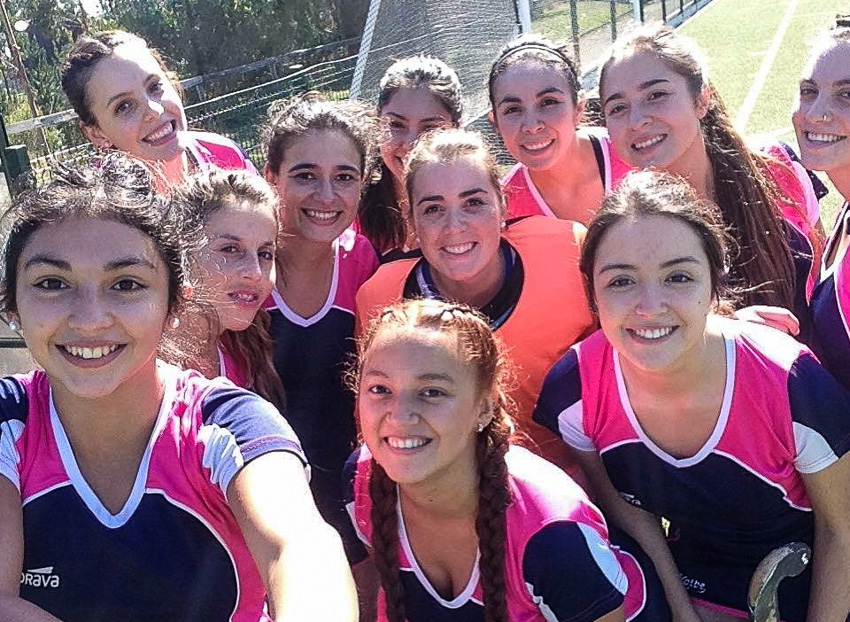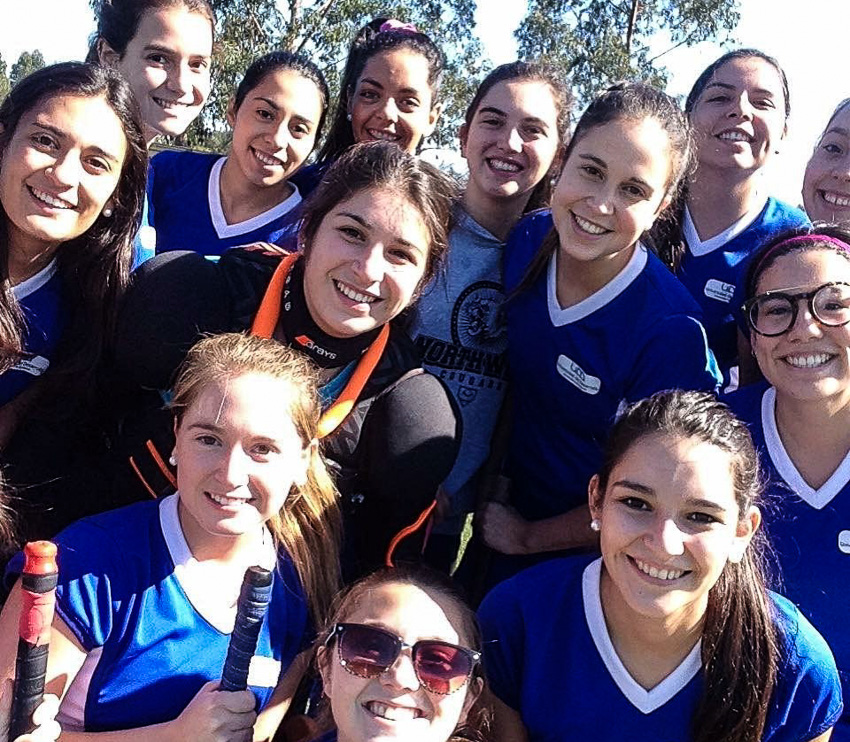
Chile is a nation that is on the move when it comes to hockey. At the end of November, Santiago plays host to the women’s Junior World Cup and the start of 2017 will see both the men’s and women’s national senior teams contesting Hockey World League Round Two after they both eased through the Round One stages.
In this interview we talk to two people who are involved in hockey development in Chile. Alfredo Mella is the man in charge of the national development program and, as such, has a long-term strategy for development in Chile. Michael Gibney hails from the UK but, since moving to Chile, has thrown himself into driving hockey forwards in Concepcion and the surrounding region.
Alfredo explains what has been happening in the past few months to raise the profile of hockey in Chile. “Traditionally hockey was played in Chile only in the established clubs and the English schools, but in the last year our sport has gone through a big change because a lot of new players have been introduced to the game. More schools have introduced hockey onto the curriculum, especially for girls, so now the efforts of the Chilean Hockey Association is to increase the number of boys who play hockey in the country.”
This latter point is being addressed by the national association through the provision of coaching programs and resources specifically aimed at getting more boys and men into the game.
Generally speaking however, it seems to be the schools that are leading the changes. There are numerous competitive opportunities for school teams to play and Alfredo says this is being backed up by clubs and the national association who are providing pathways for players to progress once they have left school or reached a certain level of ability within the game.
Of course, like so many other South American countries, football remains the sport of choice both for participants and spectators but Alfredo reports that there has been a surge in people looking for alternative sporting activities to get involved in. As a team sport, hockey has the advantage of appealing to both genders, making it easier for young siblings to be taken to a club for training. And you cannot underestimate the impact of a team’s success upon a sport’s popularity. Chile men and women have both been moving steadily up the world ranking in recent years after good performances at the Pan American Games and FIH Hockey World League (HWL).
Alfredo also points out that hockey is one of those sports where people remain within the structure even when they stop playing – be it as a coach, an umpire or an organiser.
The drive to promote hockey to young players is paying dividends. Alfredo estimates that more than 8,000 people play hockey regularly in local clubs, schools and fun competitions, with 2,500 playing in national tournaments. The sticking point is the availability of suitable pitches. Alfredo is hopeful that investment will soon be available that will help address the problem. “To play at a higher level, having a pitch is important and for that you have to have investment. We think that we could have soon a public hockey pitch, not only for our national teams to train on, but for a lot of the clubs too. That will be an important help to raise performance levels.”
While Santiago was the focal point for hockey in Chile, the game is rapidly spreading. Alfredo is proud to report that there is now serious amounts of hockey being played across the whole country: “Viña del Mar, Concepcion, Antofagasta, Temuco, Punta Arenas – even in Easter Island there is now a hockey program,” he says.
The Chile Hockey Association is taking a very ‘joined-up’ approach to development. Any school, club or area that wants to start a hockey program is supplied with coaching tools and resources. Hockey sticks are provided and the teachers or would-be coaches are given training in delivering hockey sessions. This training is delivered by high performance coaches who are based at the National Academy. Players on the national team are drafted in to help promote the sport and inspire the players.
A strong coaching structure is at the heart of the national association’s ethos. The National Academy works with universities to teach hockey coaching to trainee sports teachers and once a year a large coaching seminar is led by the national team coaches and guest coaches from other nations.
The Chile Hockey Association has a strong structure with a clear vision – to make hockey a relevant and sustainable sport in Chile. To make that vision become a reality, the sport needs its grass roots champions and Michael Gibney is just one of many people answering the call.
Michael moved to Chile from Great Britain when he was 25. The move across the seas was precipitated by an invitation to help train young players at the Prince of Wales Country Club in Santiago. As Michael says: “That was where I began to see the fanaticism and passion that drives hockey in Chile.”
Michael moved from Santiago to Concepcion in 2013 and he was struck immediately by the difference between access to hockey opportunities in the capital city compared to access in the surrounding regions.
“There is no doubt there are important hockey clubs in Concepcion and the surrounding area, with dedicated trainers and there is a growing hockey legacy in Chile but the quantity of games per month was quite depressing. The same teams played each other quite regularly.
“There has clearly been an increase in recent years to help push the quantity of games played but one of the main issues is the necessity to travel to either Santiago or Viña del Mar in long journeys to only play two games. The time and cost of these journeys create a barrier that essentially stops the growth of hockey.”
Determined to do something about the situation Michael and fellow hockey enthusiast Christian Cifuentes put their heads together to come up with a solution. As Michael says, “The Liga Bio Bio was created over a cup of coffee.”
The hockey duo got together with local hockey contacts and soon eight club teams and three university teams were initiated into a local league – The Liga Bio Bio. All the matches were played on the school fields at Saint John’s School and in September 2015, eight months after the league was created, the University of Concepcion was crowned inaugural league champions. A second season saw the league grow in size with teams from Los Angeles – a city that is an hour’s drive from Concepcion – also joining the hockey party.
The league continues to grow. Michael says: “This season, we have been astounded by the inclusion of teams from Temuco, which is four hours from Concepcion, which has brought more competition to the league and started to show that hockey is an important past time for many people in the southern regions of Chile.”
In addition to the league, there is also a monthly Liga Bio Bio Festival for young players. More than 100 youngsters from seven schools turn up for the event, ensuring, as Michael points out, that hockey is played by the next generation.
Liga Bio Bio will continue to grow and Michael and Christian’s vision is for the local hockey structure to spread to regional leagues and competitions. “We would love to one day become part of a regional league set-up with finals being played with teams in Santiago and also opening up the reality of playing more games and developing links with more communities to ensure better access to hockey in Chile.”
The next year could prove a watershed moment for hockey in Chile. The spectacle of the women’s Junior World Cup will turn the international hockey community’s gaze onto Santiago and send the sport’s profile sky high among the Chilean population. A good showing in the Hockey World League Round Two next year will raise the sport’s profile even higher. A challenge to football? That may be some way off, but Chilean hockey is certainly heading in the right direction.

